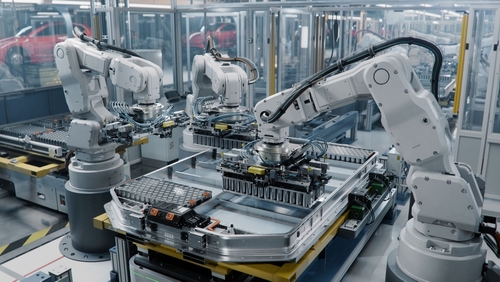The surge in U.S. manufacturing investments is a triumph for Americans keen on protecting homegrown jobs and economic independence. Companies are stepping up to localize production, responding to potential tariff threats, and creating opportunities for American workers. Industry leaders are leveraging technology and forging alliances to ensure a sustainable future for the nation’s manufacturing sector.
U.S. Manufacturing Expansion
Several corporations have announced plans to expand their production capabilities in the United States. AstraZeneca, Eli Lilly, and Novo Nordisk are leading this wave of investment, with a focus on innovation and job creation. Abbott Laboratories is set to invest $500 million across Illinois and Texas, while Apple is committing over $500 billion to grow its facilities in several states.
The growth in manufacturing investment in the US is getting to be quite notable. It's up by by 65% since 2019 and is at nearly $300 billion within the last two years. The states with the most investment are Arizona, Ohio, New York, Texas, and Georgia. pic.twitter.com/AcnfcwXN8q
— Hunter📈🌈📊 (@StatisticUrban) April 23, 2024
Novo Nordisk is creating up to 1,000 roles in North Carolina, symbolizing the potential for significant workforce development. This move aligns with broader industry trends toward automation and advanced manufacturing technologies. Eli Lilly plans to create over 3,000 jobs with a $27 billion investment, bolstering the local job market.
Impact of Tariffs and Investments
The White House has championed these investments as a significant win for American manufacturing under President Trump’s leadership. Johnson & Johnson’s $55 billion expansion is celebrated as a pivotal victory for bolstering domestic manufacturing. Economists suggest that broad-based tariffs could hinder job growth, although they may help foster emerging industries.
President Trump on tariffs:
“We're doing it because we want to make our own drugs… We want to make our own steel and aluminum, lumber, other things… We have over $7 trillion being invested in the country.” pic.twitter.com/1tW0aIYwWC
— DOGE NEWS- Department of Government Efficiency (@realdogeusa) April 14, 2025
Tariffs could also drive production shifts, as seen with Honda relocating Civic Hybrid Hatchback production from Japan to the U.S. Cra-Z-Art is increasing production capacity by 50% to offset rising tariff costs. Hyundai Motor Company plans to invest $21 billion between 2025 and 2028.
Building a Skilled Workforce
Biopharma companies, such as Roche, are increasing their investments, committing $50 billion to U.S. operations. Industry leaders are focusing on developing a highly skilled workforce to support these advancements in manufacturing. There is a strong emphasis on educational collaborations to ensure equitable access to upskilling opportunities.
“massive victory in President Donald J. Trump’s unrelenting pursuit of American manufacturing dominance” – White House
The shift presents a chance for professionals to secure roles in engineering, production, and quality logistics. The goal is for America to emerge stronger and more resilient, with a workforce prepared for the demands of modern manufacturing. As companies embrace new technologies, the future looks promising for American-made products and jobs.
Sources:
https://www.cbsnews.com/news/us-manufacturing-domestic-tariffs/

